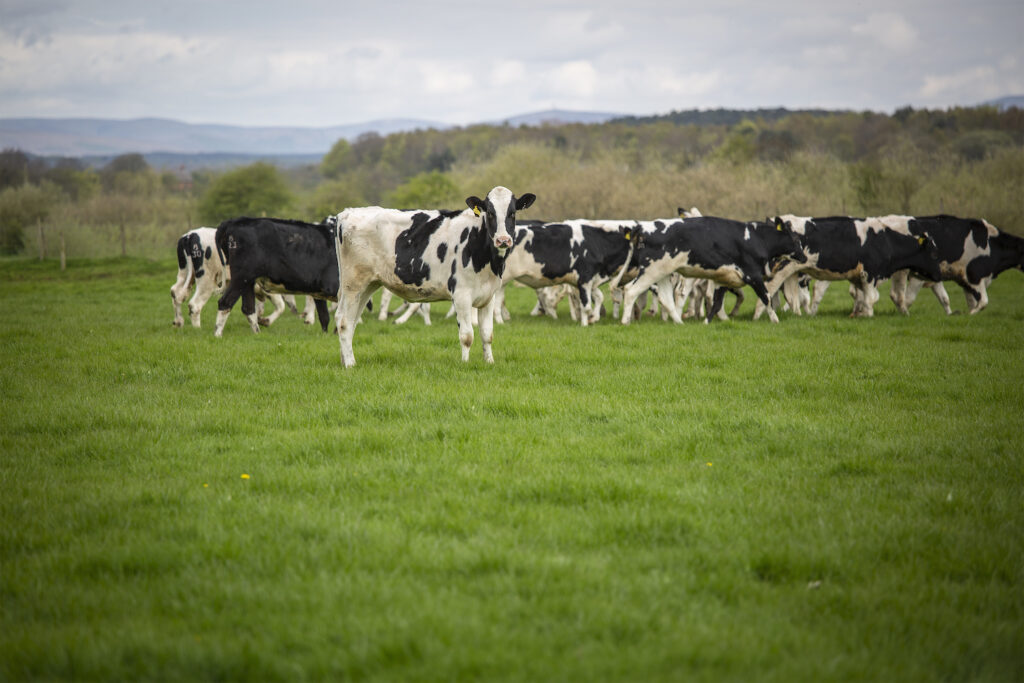Sustainability benefits make sexed semen an increasingly popular option
1st August 2022
Progesterone is the mainstay of fertility management protocols in the UK and the use of progesterone releasing devices before the use of FTAI protocols can enhance conception rates to first AI, explains Ceva Animal Health veterinary advisor Katherine Timms.
There is increasing pressure on the British dairy industry to maintain high welfare standards, whilst, at the same time, improve sustainability and productivity. This can seem a daunting proposition, yet there are some key changes that can be made to significantly contribute to progress, such as swapping to sexed semen for heifers and genetically advantageous cows.
Sexed semen produces a 90% sex bias for female offspring1, while conventional semen leads to a surplus of unwanted male dairy calves which can increase the risk of dystocia compared to heifer calves and have a low economic value2.
Dr Jude Capper, livestock sustainability consultant and ABP chair in sustainable beef and sheep production at Harper Adams University, comments: “The biggest challenge to the farming industry in maintaining healthy levels of meat and dairy in the diets of future consumers is to demonstrate that farmers are making industry-wide positive changes which will improve consumer trust.
“The sustainability benefits of using sexed semen mean that it is an increasingly popular choice for farmers to reduce unwanted male offspring, improve calf welfare, enhance genetic gain and increase profitability, making it a win/win for both farmers and consumers.”
While the cost of sexed semen straws is still higher than conventional semen, the conception rate (CR) for sexed semen has improved over the last few years and is now only about 5-10% below that of conventional semen3 meaning that overall herd economics demonstrate the sexed semen benefits.
A recent study4 revealed that heifer synchronisation using a six-day progesterone device/two dose prostaglandin F2 alpha (PGF) protocol using sexed semen achieved a conception rate to first AI of 53.5% and 62% in spring block-calving and autumn block-calving herds respectively.
When the spring calving costs were analysed, the net benefit of the synchronisation programme was considered to be an underestimate at £88.55 per heifer.
The use of progesterone releasing devices improve the quality of pre-ovulatory follicles5,6, provide a longer duration and enhanced expression of oestrus enabling better detection7, offer more predictable ovulation8, 9 and competent oocytes5, while enhancing endometrial function10 and optimal embryo quality11,12.
Prid Delta delivers the highest circulating progesterone levels13 of any device on the UK market as a result of the 29% larger surface area in contact with the vaginal wall and the fact that it contains 12% more progesterone per device14,15.
“Sexed semen is a rapidly growing alternative to conventional semen for the artificial insemination of dairy cows and by 2021 over half of all semen sold into the dairy industry was sex-sorted, jumping from a 32% share the previous year16,” says Katherine Timms BVetMed (Hons) MRCVS, ruminant veterinary advisor at Ceva Animal Health.
“Progesterone is the mainstay of fertility management protocols in the UK and the use of progesterone releasing devices, such as Prid Delta, before the use of FTAI protocols can enhance conception rates to first AI.”
For further information on fertility management and the use of progesterone releasing devices in synchronisation protocols before the use of sexed semen, contact your vet.
References
- Butler et al Applications and cost benefits of sexed semen in pasture-based dairy production systems. S.T. Butler, I.A. Hutchinson, A.R. Cromie and L.Shalloo.
- A. Holden, S.T. Butler. Review: applications and benefits of sexed semen in dairy and beef herds. Animal; volume 12, supplement 1, 2018, pages s97-s103.
- Chebel, R.C., and T. Cunha. Optimization of timing of insemination of dairy heifers inseminated with sex-sorted semen. J.Dairy Sci. 2020;103:5991-5603. https://doi.org/10.3168/jds.2019-17870.
- Kerby, T. Clarke, T. Angel, K. Mackenzie. The use of fixed time artificial insemination programme for the use of sexes semen in block calving dairy heifers. UK Vet Livestock May/June 2021 Volume 26 No 3.
- Patrick Lonergan. Influence of progesterone on oocyte quality and embryo development in cows. Theriogenology 76 (2011) 1594-1601.
- C. Wiltbank, A.H. Souza, P.D. Carvalho, A.P. Cunha, J.O. Giordano, P.M. Fricke, G.M. Baez and M.G. Diskin. Physiological and practical effects of progesterone on reproduction in dairy cattle. Animal (2014), 8:s1, pp70-81.
- H. Lopez, L.D. Satter and M.C. Wiltbank. 2004. Relationship between level of milk production and estrous behavior of lactating dairy cows. Reprod. Sci. 81(2004):209-223.
- Block, A., et al., Endocrine Alterations Associated with Extended Time Interval Between Estrus and Ovulation in High-Yield Dairy Cows. Journal of DairyScience, 2006. 89(12): p. 4694-4702.
- Walker, W.L., R.L. Nebel, and M.L. McGilliard, Time of Ovulation Relative to Mounting Activity in Dairy Cattle. Journal of Dairy Science, 1996. 79(9): p.155-1561.
- Lonergan, L. O’Hara, N. Forde. Role of diestrus progesterone on endometrial function and conceptus development in cattle. Anim. Reprod., v.10, n.3.p.223-227, Jul./Sept. 2013.
- Rivera FA, Mendonca LGD, Lopes G, Santos JEP, Perez RV, Amstalden M, Correa-Calderon A and Chebel RC 2011. Reduced progesterone concentration during growth of the first follicular wave affects embryo quality but has no effect on embryo survival post transfer in lactating dairy cows. Reproduction 141(2011), 333-342.
- Diskin MG, Murphy JJ, Sreenan JM. Embroyo survival in dairy cows managed under pastoral conditions. Anim Reprod Sci 2006;96:297-311.
- van Werven, F. Waldeck, A.H. Souza, S. Floch, M. Englebienne. Comparison of two intravaginal progesterone releasing devices (PRID Delta vs CIDR) in dairy cows: Blood progesterone profile and field fertility. Animal Reproduction Science 138 (2013) 143-149.
- PRID DELTA Summary of Product Characteristics
- CIDR Summary of Product Characteristics
- Survey of GB semen companies carried out by AHDB’s animal genetics team, 2020.

